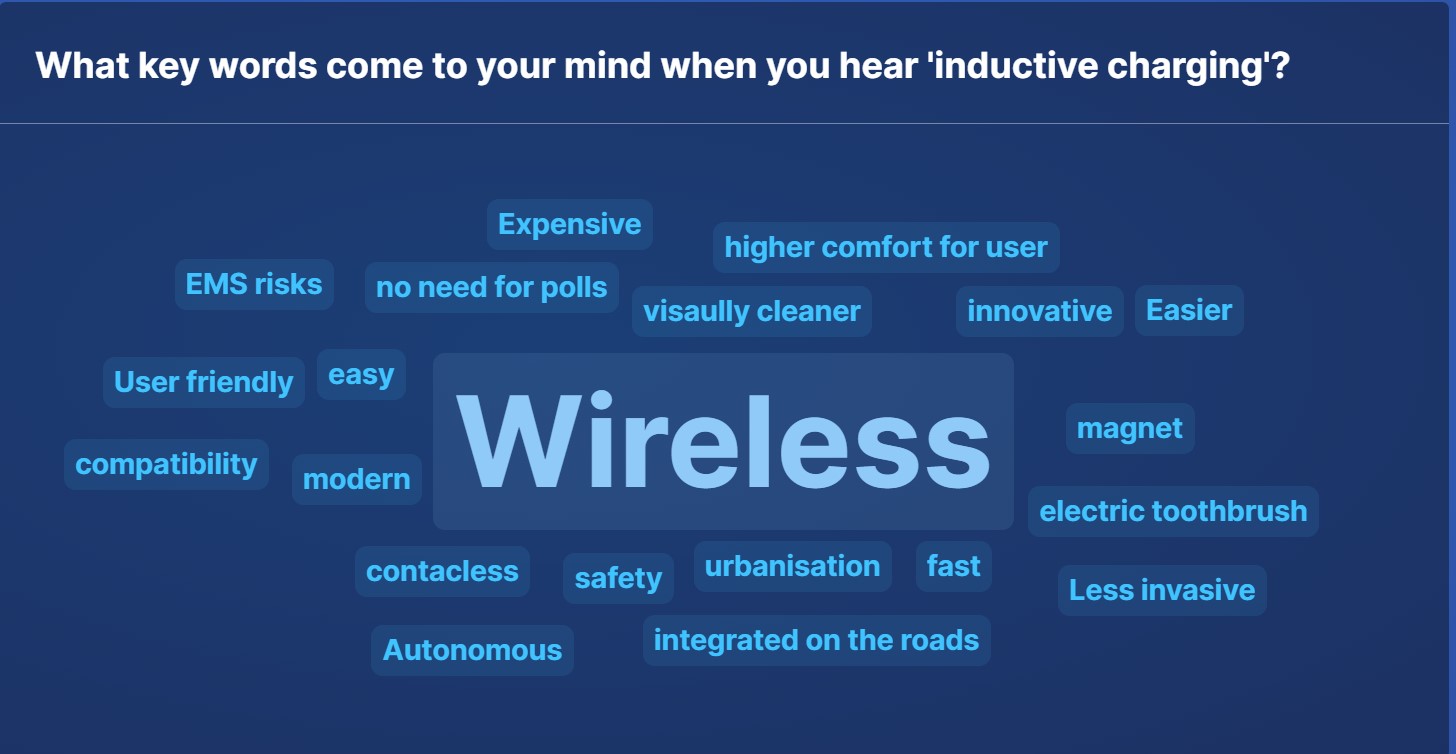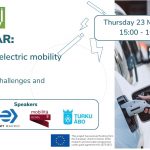Technical webinar – The world of inductive charging
What if electric charging infrastructure could take up less urban space? What if it was made easier for users to charge their electric vehicles? Are wireless technologies safe for our health? What are the best use-cases for testing inductive charging?
On 19 October, USER-CHI project organised a technical webinar on the topic of inductive charging to answer all these burning questions.
What is inductive charging?
Inductive charging, dating back to Nikola Tesla’s early experiments in the 1890s, is a wireless method for charging electric vehicles using electromagnetic fields to transfer energy from a charging station to the vehicle’s battery. Dr. Sergio Perez, from ENRX Group, introduced this technology, emphasizing its user-friendliness, resilience in extreme weather, interoperability, and autonomy. Unlike traditional cable-based charging, wireless charging eliminates the need for manual plugging, making it an attractive option for high-value, high-use vehicles like buses and short-haul trucks. It also plays a crucial role in integrating vehicles into smart grids, as they need to be connected even when their batteries are fully charged.

Source illustrations: Slido poll
Use-cases for inductive charging
Inductive charging for EVs finds has various applications, including autonomous driving, car-sharing, taxi fleets, last-mile solutions, and long-haul trucks. The technology can be static, semi-dynamic, or dynamic, depending on the scenario. ENRX has conducted pilot projects worldwide to test these different features. For instance, static inductive charging has been deployed at bus stops in Braunschweig, Germany, with successful 200 kW charging stations powering electric buses. This technology’s speed and convenience enable range addition during short stops. Moreover, it’s suitable for maritime use, as demonstrated with the Ferry Fredrikstad in Norway, where a fully automated wireless charging system streamlines energy transfer from shore to ship.
Electric roadways, a cutting-edge concept, are also being tested in several countries, including Germany, Belgium, and the USA, reflecting the expansion of inductive charging technology.
Inductive charging in practice
INDUCAR
INDUCAR, developed by ENRX under the USER-CHI project, offers assisted parking functionality and 3 kW static wireless charging. It’s currently being tested at the headquarters of AMB with two retrofitted Renault Zoe vehicles, as presented by Silvia Valero (AMB).
AMB aims to improve user-friendliness through these tests and, as a key actor in the economy and the territory, contributes to innovative projects that drive change.
Source illustrations: Silvia Valero & Sergio Perez
INCIT-EV
The INCIT-EV project , presented by Miguel Zarzuela from CIRCE, is testing three interoperable dynamic and static wireless charging systems with four retrofitted vehicles. One use-case is underway in Zaragoza, Spain, with a 50 kW static wireless charger designed for taxi queues. In Paris, a dynamic 90 kW wireless charging system caters to vans and passenger cars traveling on designated road segments. A third dynamic charging system powered by local renewable energy is designed for high-speed charging. These dynamic use-cases aim to showcase the interoperability of wireless charging systems across a variety of vehicles, power ratings, and speeds.

Source illustrations: INCIT-EV wireless charger, Zaragoza (Spain), Miguel Zarzuela
What’s in it for cities?
Inductive charging offers numerous advantages for cities. It minimizes the impact on urban space and visual pollution, making it an excellent fit for municipalities struggling with space constraints and allows to give as much space as possible to citizens and active mobility modes. By installing wireless charging infrastructure at convenient locations across the city, range anxiety is reduced, and electric mobility becomes more accessible. This technology is especially beneficial for public transport fleets, company fleets, and taxis. While large-scale deployment is not yet widespread, wireless charging complements traditional EV charging options.
Challenges and the path forward
Despite its potential, inductive charging faces challenges such as cost, interoperability standards, and the need to engage car manufacturers in its adoption. To address these issues, industry stakeholders are collaborating with OEMs to integrate wireless charging into vehicles and establish industry-wide standards.
Is it safe?
Wireless EV charging is safe as pads are encapsulated and optimised to comply with general rules and guidelines about electromagnetic fields.

Source illustrations: DALL-E generated image, Silvia Valero








